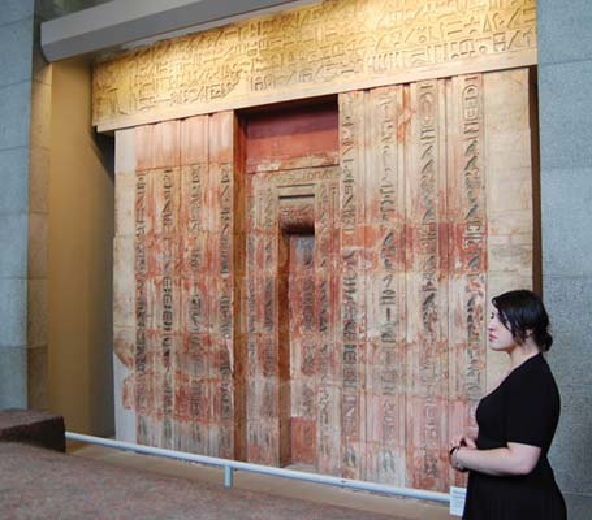Travel Reference
In-Depth Information
Mastabas
like Ptahshepses' were decorated inside and out with statues, steles, and
frescoes like those displayed nearby. These pictured things that the soul would find useful
in the next life—magical spells, lists of the deceased's accomplishments, snapshots of the
deceased and his family while alive, and secret passwords from the Egyptian Book of the
Dead. False doors like this allowed the soul (but not grave robbers) to come and go.
•
Just past Ptahshepses' false door is a glass case with a statue.
Statue of Nenkheftka
Painted statues such as this one (c. 2400
B.C.
) represented the soul of the deceased. Meant
to keep alive the memory and personality of the departed, this image would have greeted
Nenkheftka's loved ones when they brought food offerings to place at his feet to nourish
his soul. (In the mummification rites, the mouth was ritually opened, to prepare it to eat
soul food.)


